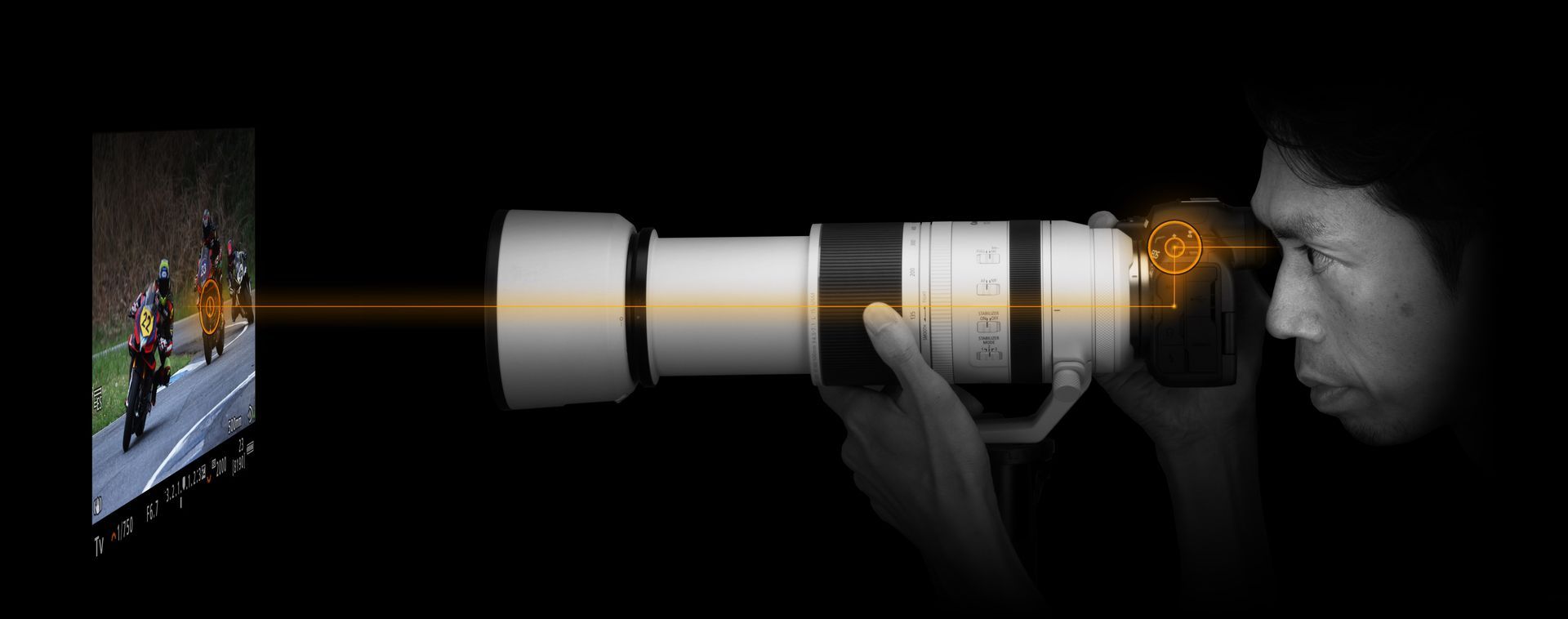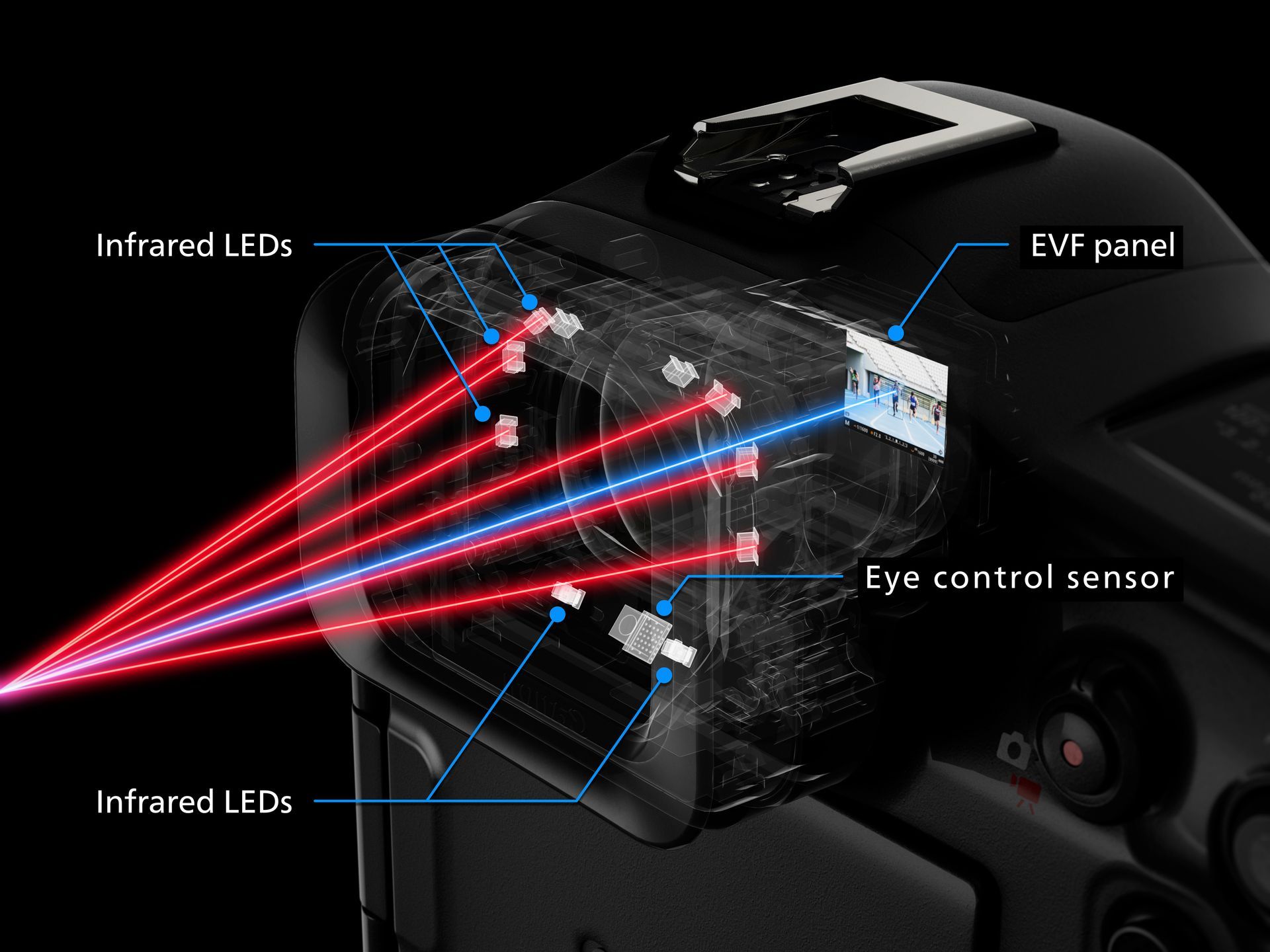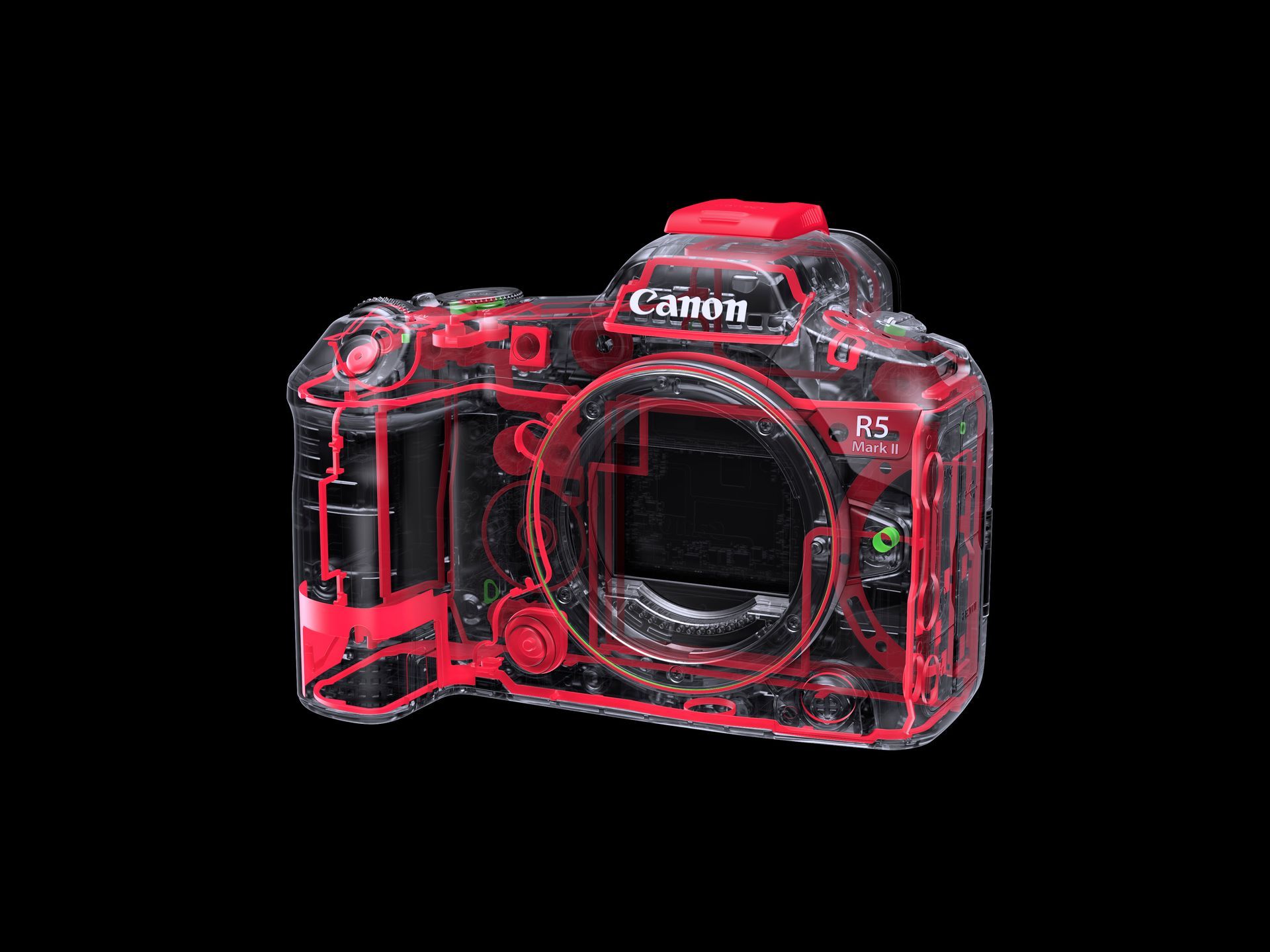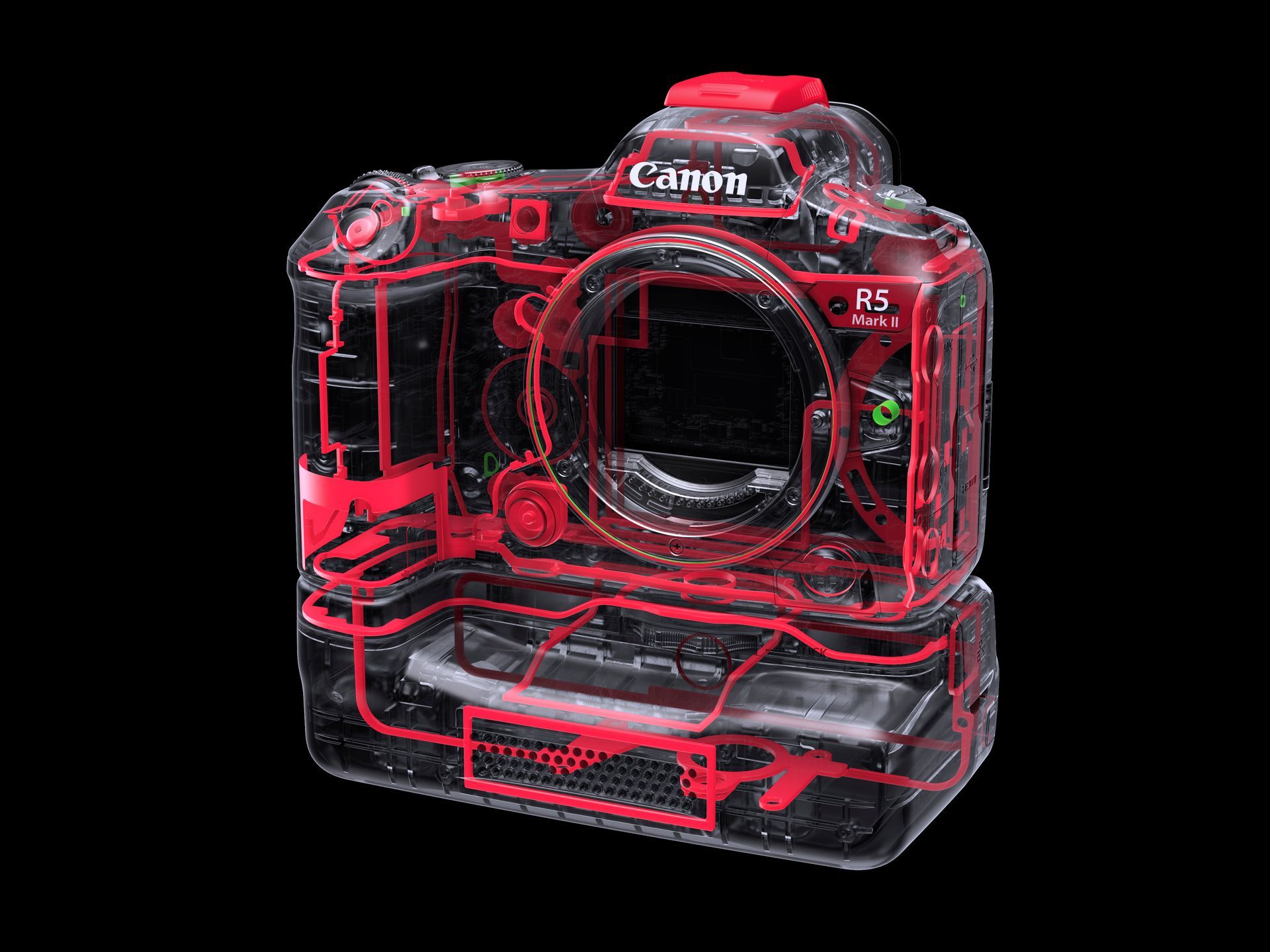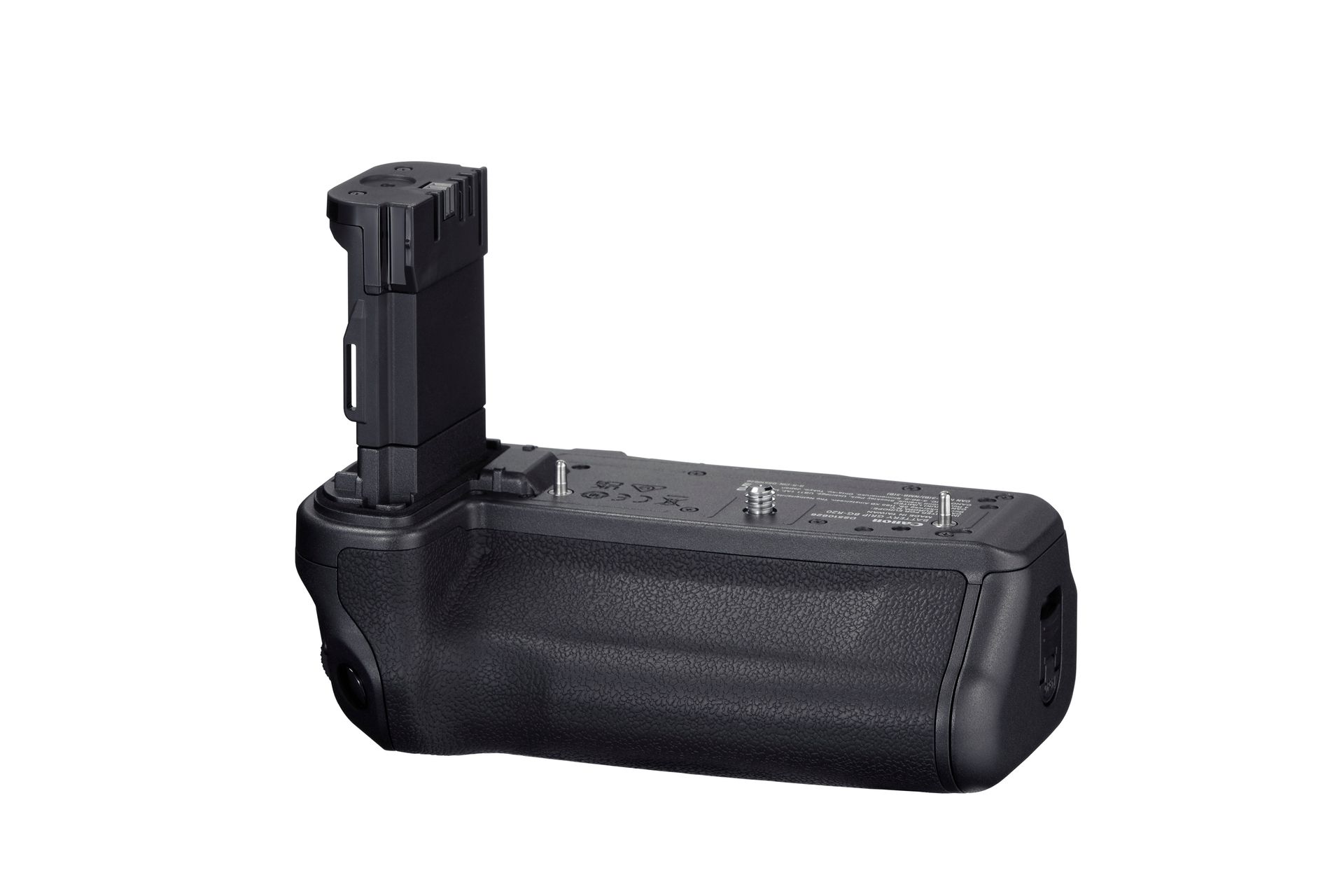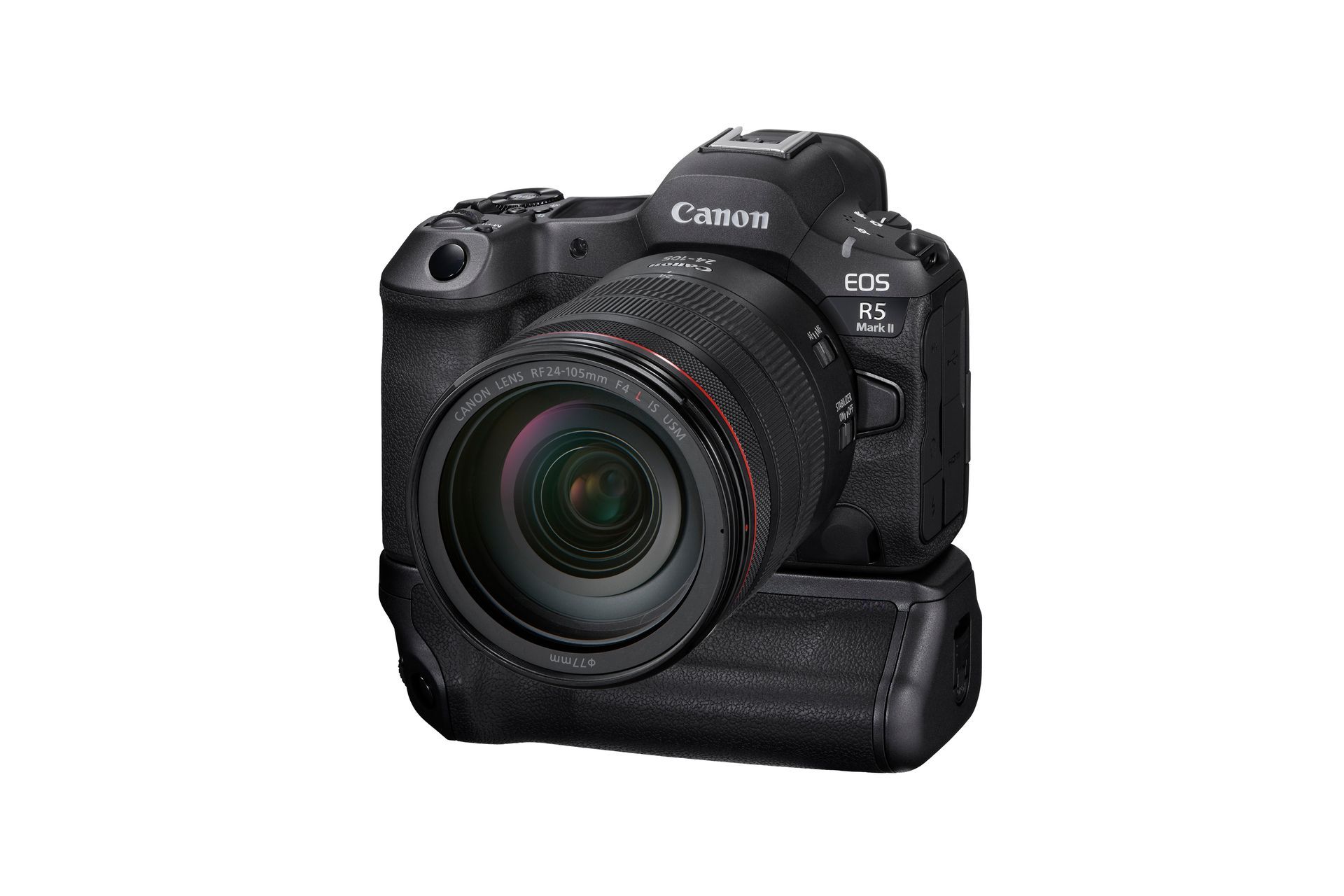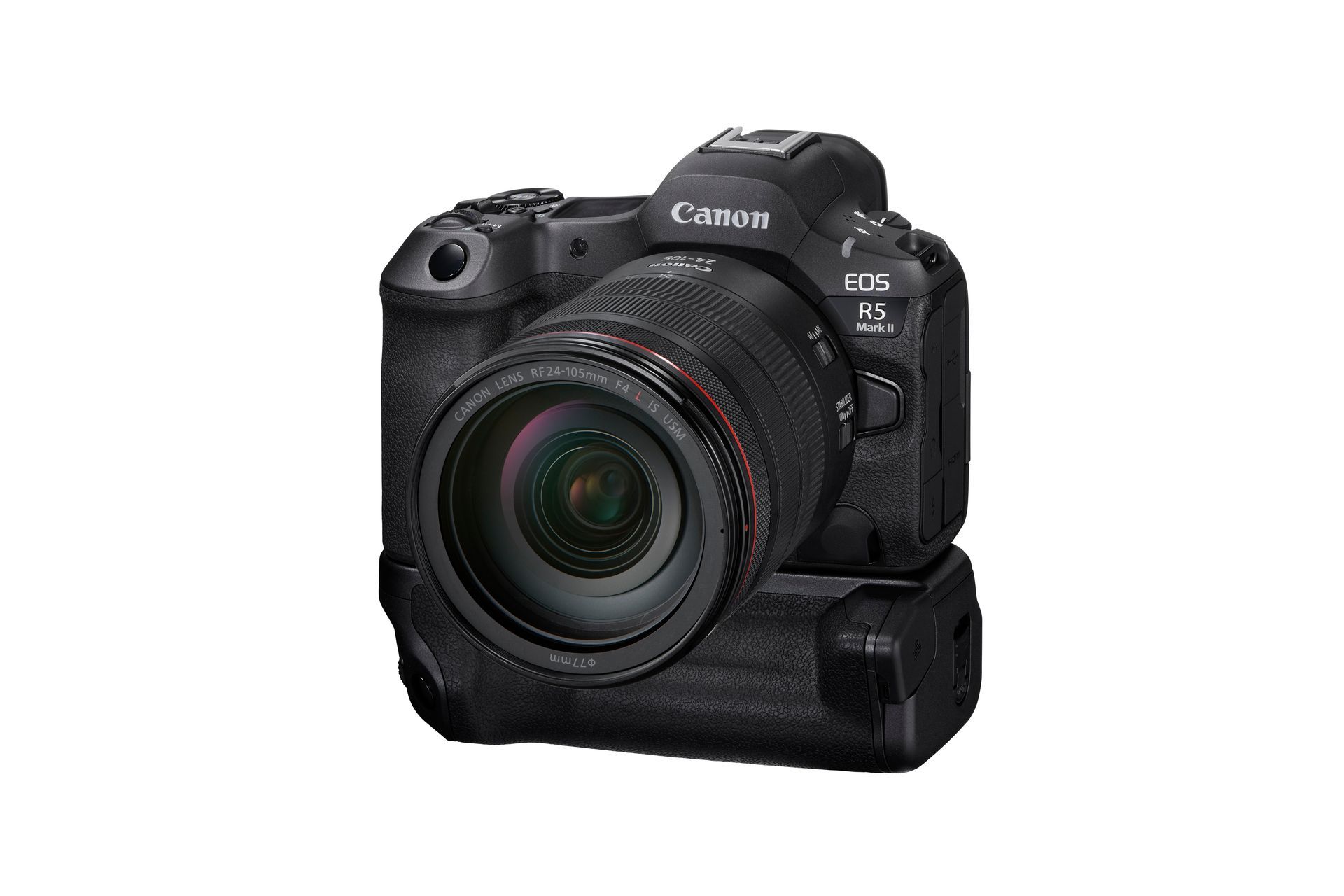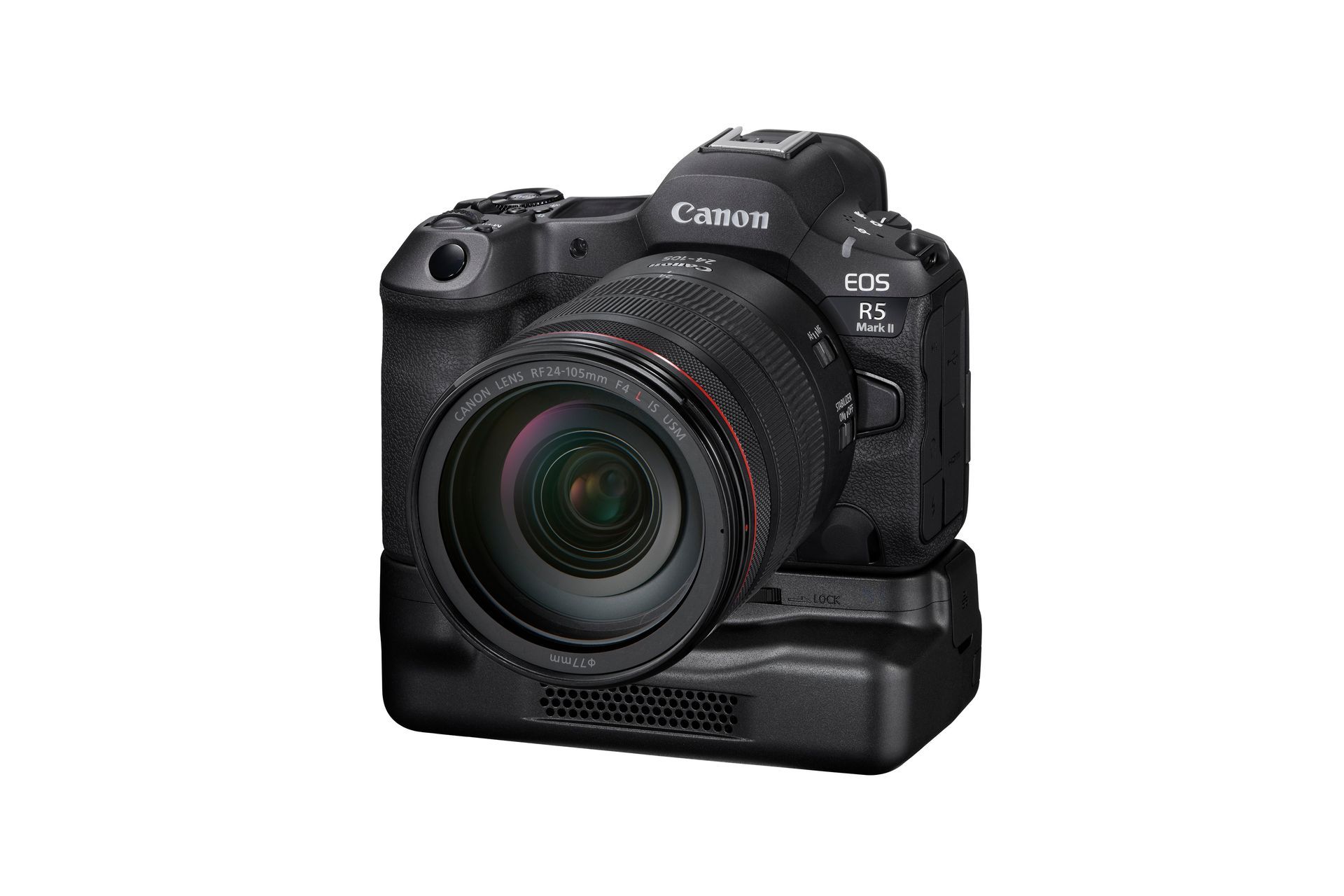NEW | Canon EOS R5 Mark II Mirrorless Camera
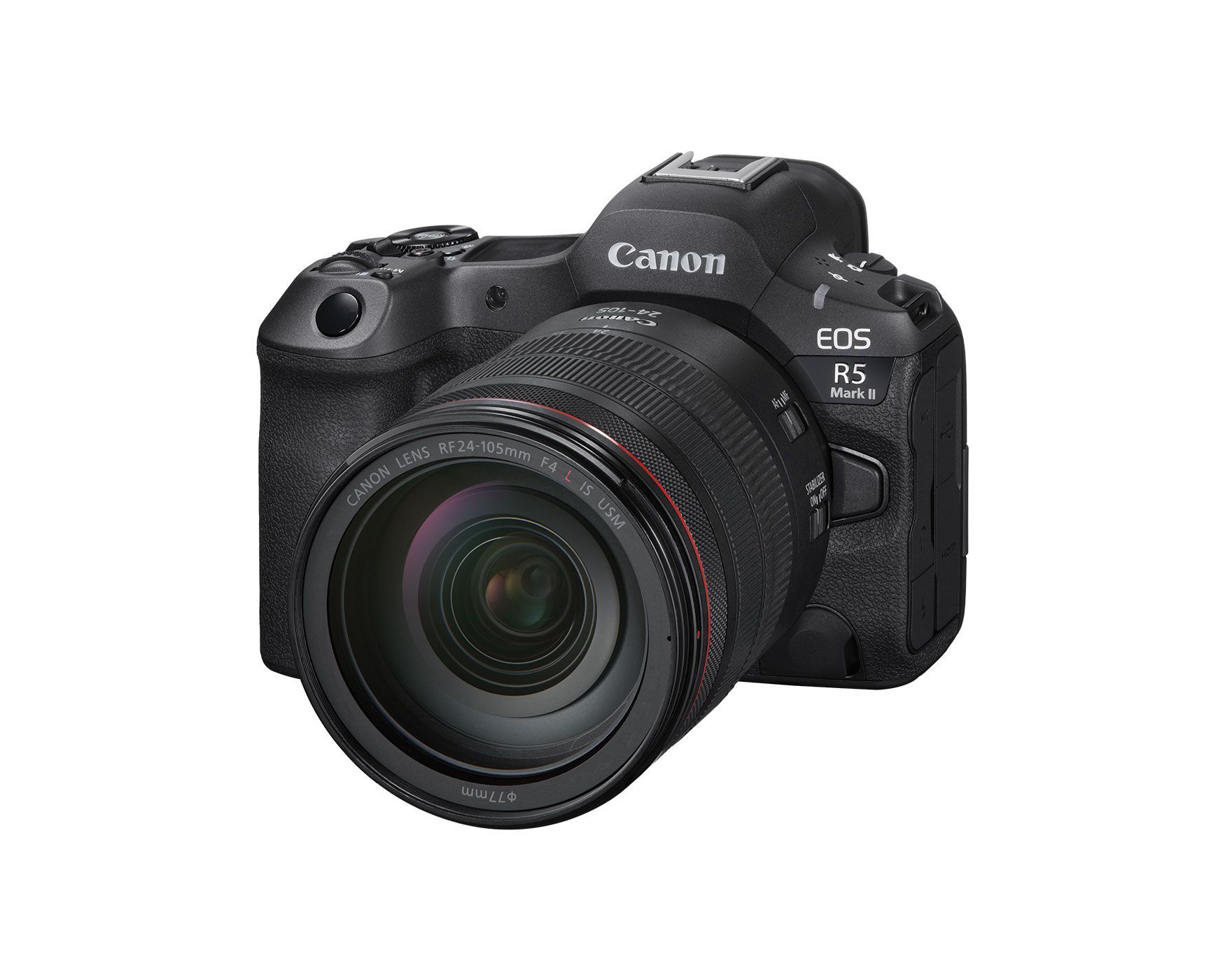
Overview:
The EOS R5 Mark II is a worthy successor to the incredibly versatile EOS R5 bringing a host of new features that make this the most powerful EOS 5 series camera ever. It starts with a brand-new 45MP sensor that is back illuminated and stacked for blazingly fast read-out speeds that allow for a 30 fps electronic shutter, then builds on that with major focus improvements, increased video capabilities, and so much more.
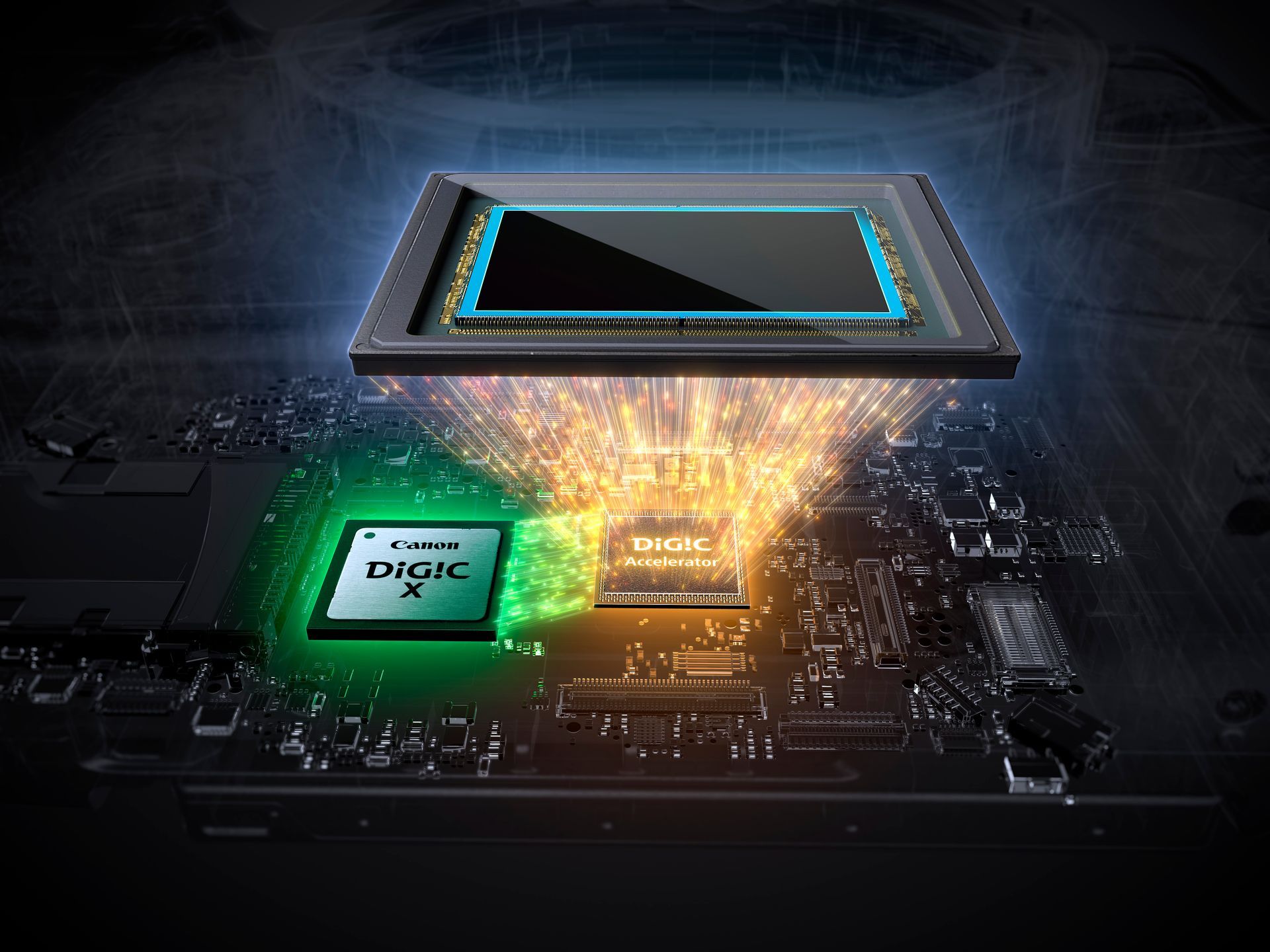
DIGIC Accelerator
The DIGIC Accelerator chip is a completely new front-end processor developed by Canon to supplement the power of the proven DIGIC X processor. The DIGIC Accelerator handles the processing that makes so many of the new features of this camera possible, allowing the DIGIC X chip to focus solely on image processing, again contributing to incredible speed. The DIGIC Accelerator processes large volumes of data directly from the image sensor for actions like AF detection to exposure metering calculations that enable eye-control focus, subject identification and tracking, and even deep learning with features like neural upscaling and noise reduction.
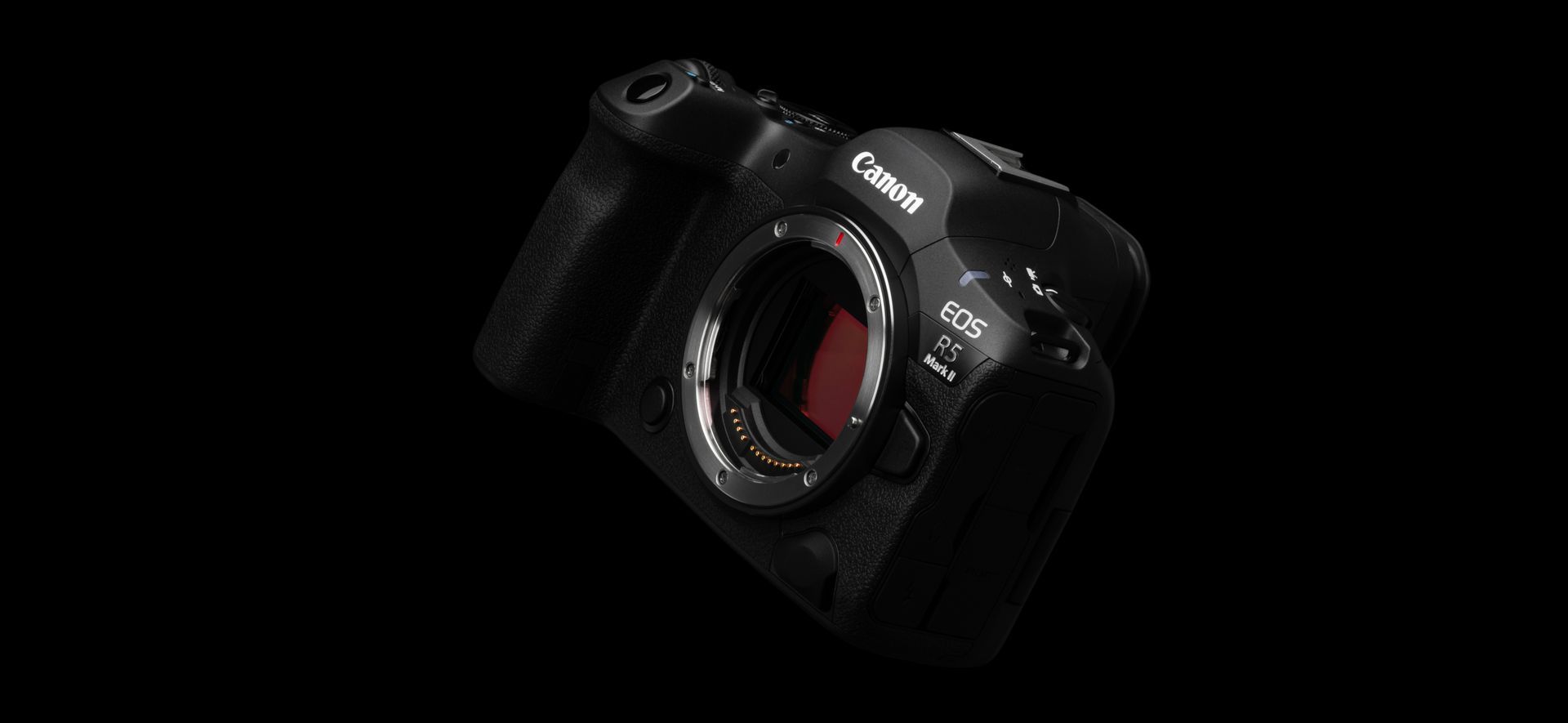
Totally new Sensor
Even though the pixel count is the same as the EOS R5, this is a completely new 45MP sensor design. This new full-frame sensor is stacked and back-illuminated allowing for incredible electronic shutter performance of 30 fps RAW or full-resolution JPEG still images. Sensor read-out speeds are dramatically increased, significantly reducing rolling shutter distortion. Pre-continuous shooting is now possible in electronic shutter mode, when the shutter is pressed halfway the camera begins capturing images, and when fully pressed, the previous ½-second of images are written to the memory card.
Time to focus
Autofocus has been significantly updated on the EOS R5 Mark II with features like subject tracking which it shares with the new flagship EOS R1. Subject tracking allows you to maintain focus on a subject even when they are obscured briefly while shooting. And, for even faster positioning of your active AF Area, the R5 Mark II adds Canon’s Eye Control AF - even more advanced than the Eye Control in the EOS R3 camera. Once you calibrate the viewfinder to your eye, just look where you want to focus, and the AF Area will move there when you press the AF activation button.
Action priority
Thanks again to the increased camera processing power of the DIGIC Accelerator chip, we have developed a new AF mode called Action priority. This new focusing technology selects subjects according to movement and other factors so you always get a great action shot! This feature works with three sports at the moment, soccer, volleyball, and basketball. With Action priority the camera can recognize and track specific people, and takes into account ball tracking, movement tracking, eye-control AF and more to help ensure you get the action shot you want when everything is moving so fast.
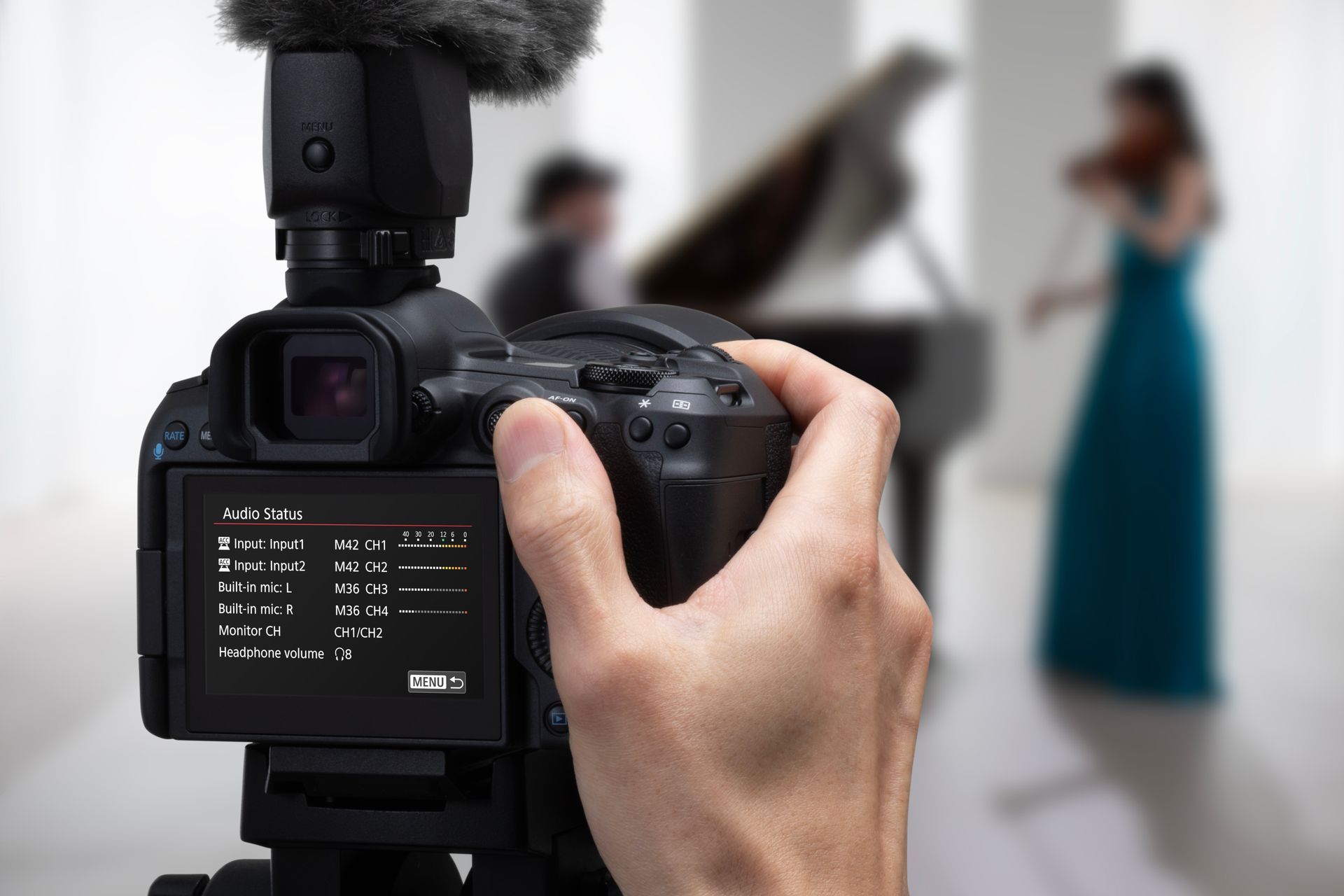
Get Cinematic
With its 45MP sensor, 8K video up to 60 frames per second can be recorded internally, to the camera’s CFexpress card (sold separately). A new menu now includes Cinema EOS terminology, making it even easier for users to access and understand the video features of this camera, and be easily integrated into video productions where Cinema EOS cameras may be used like the EOS C70 or EOS C400.
RAW video can be recorded at 8K resolution, and there’s now an S-RAW setting for 4K RAW video recording. RAW video is now 14-bit recording, for even greater range of tonalities. For users who don’t need RAW video, MP4-type video can be recorded in a multitude of possible file types and resolutions, from Full HD (at up to 240 frames per second), 4K at up to 120 frames per second with sound and 8K. Any of the “Fine” options record oversampled video, for even greater sharpness and detail. Canon Log 2 and C-Log 3 are available. And, the R5 Mark II adds features like a full-size HDMI port on the camera, Waveform monitors, and up to 24-bit, 4-channel audio recording.
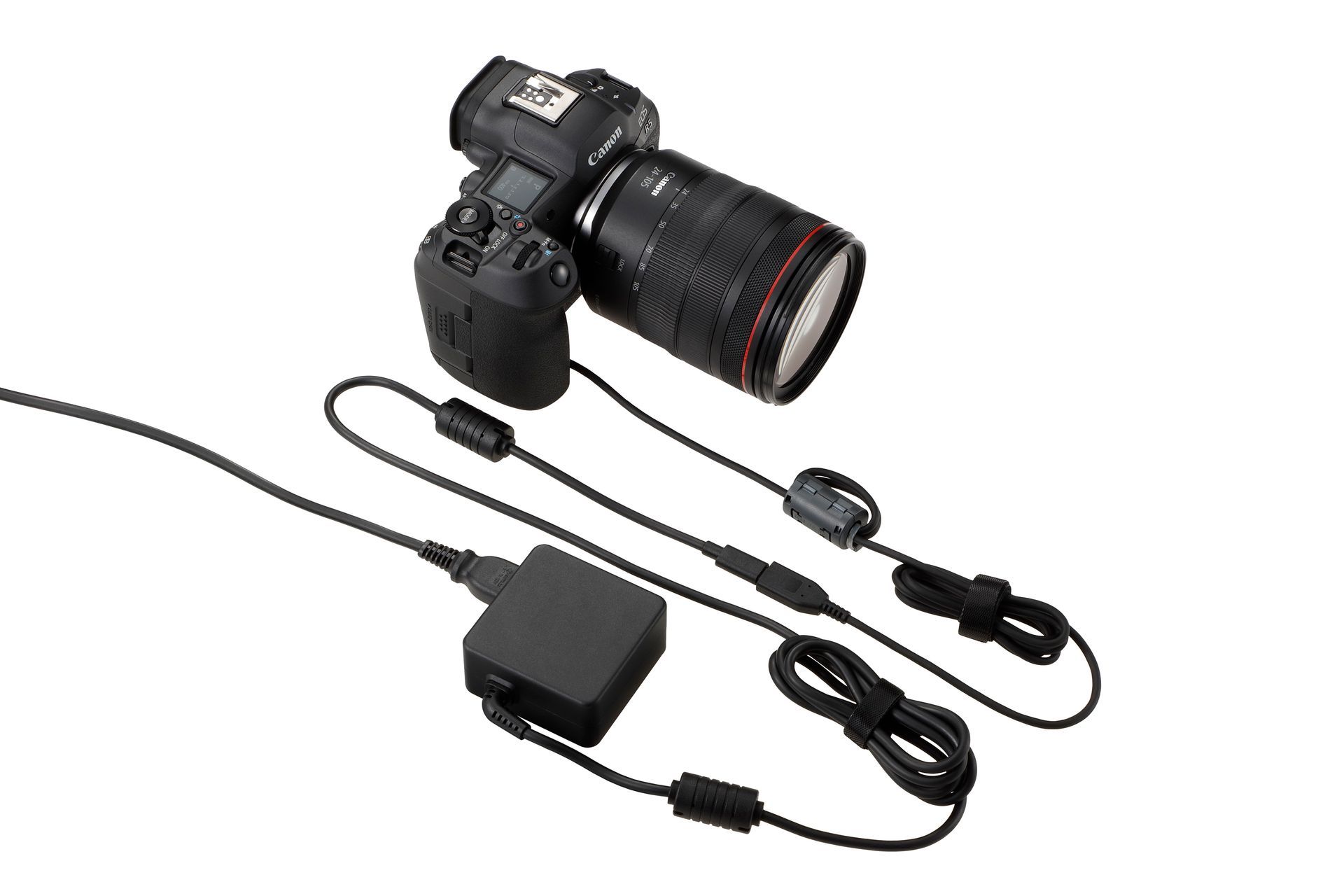
More power
With all of the enhancements to the new EOS R5 Mark II, it requires a little more power than the previous EOS Mirrorless cameras, and therefore ships with a new, higher amperage battery, the LP-E6P. This battery is the same size and shape of previous LP batteries, but is easily distinguished from older models by featuring a white stripe and white Canon logo. This new battery can be used in older Canon mirrorless and even DSLR cameras, but will require a camera firmware update to do so.
* Canon LP-E6N and LP-E6NH battery packs can be used in the R5 Mark II camera, but with some significant limitations - - especially Wi-Fi connection, and for video recording. Also, continuous Drive speeds with mechanical or first-curtain electronic shutter will be reduced. This applies to any battery in any of the optional battery grips as well.
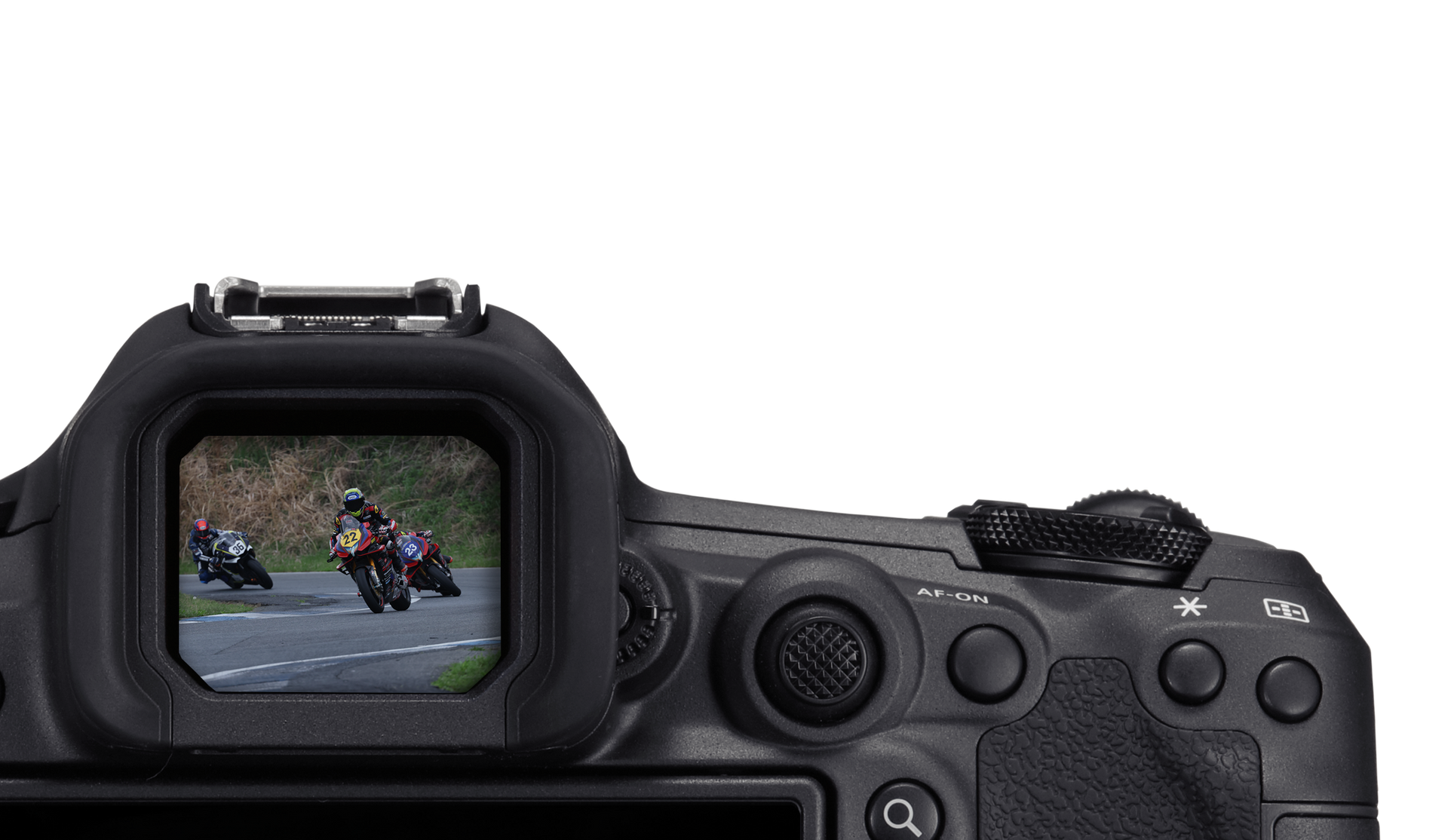
Bright and clear EVF
A new Electronic viewfinder is now the same 0.5-inch 5.76 million dot OLED EVF you would find in the EOS R3 with approx. 100% coverage, 0.76x magnification, and an eyepoint of approx. 24mm. Some of the EVF lenses inside the body are sealed in an airtight structure making it difficult for the viewfinder to fog up.
Weather resistance
The EOS R5 Mark II is dust- and weather-resistant, with the same performance as the EOS R5, even when using one of the new optional grips.
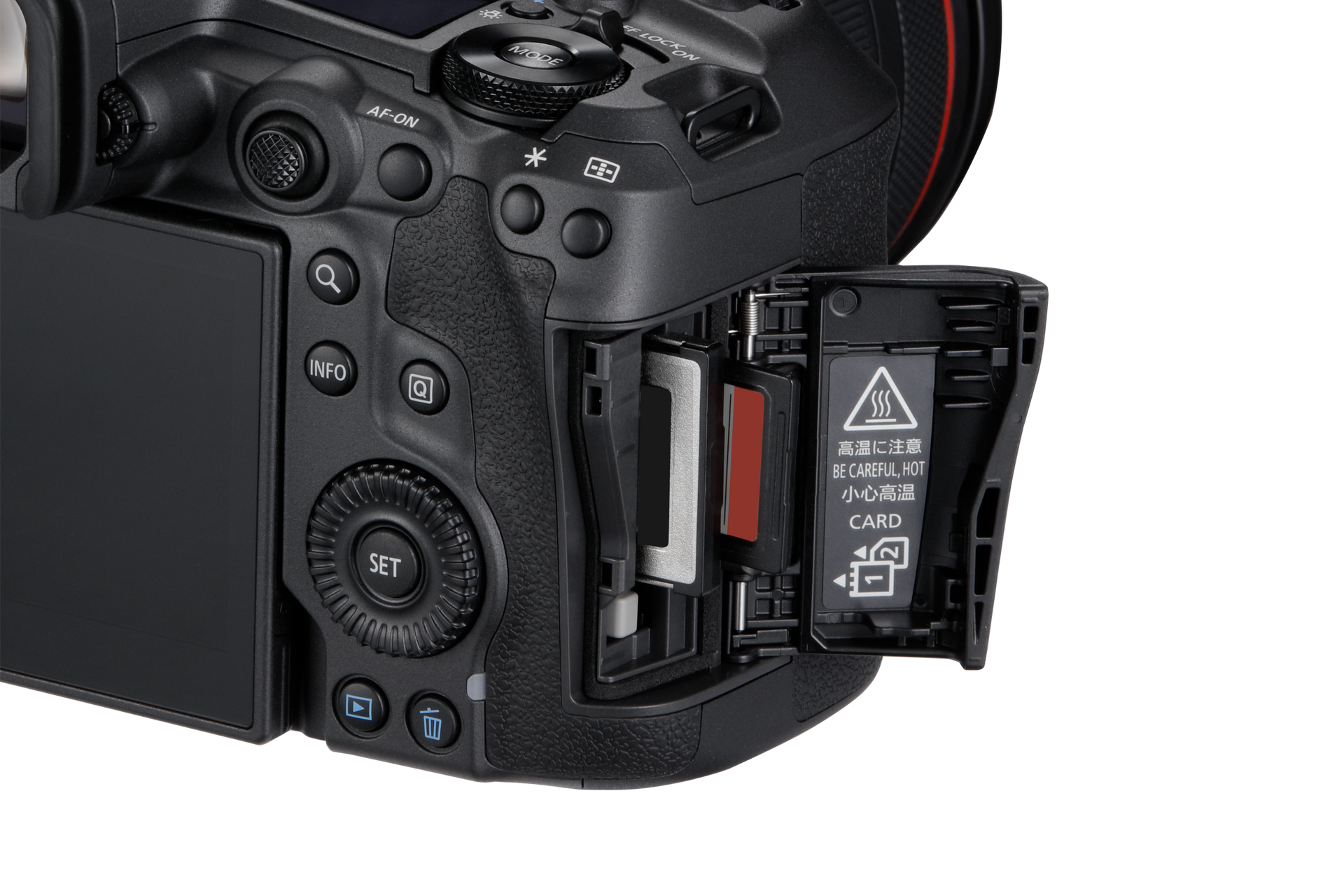
Dual Card Slots for CFexpress** and UHS-II SD Memory Cards***
Whether you are shooting photos every day, or are recording 8K videos, the EOS R5 Mark II camera can capture an incredible amount of images through its super high-speed CFexpress dual card slots. Plus a UHS-II SD*** card slot is also provided at your disposal. The two card slots can be utilized for separate recording of still photos and movies, main and proxy recording of movies, and recording to multiple cards.
** Type B compatible. With firmware v.2.0.0 and above, camera can accept CFexpress cards over 2TB in capacity. With these cards, the camera can write to the first 2TB (only) of total card capacity.
*** Some types of data cannot be saved on the SD memory card.

Improved Image Stabilization
The EOS R5 Mark II has the same 5-axis in-body stabilization as the original R5 that provides optimal image stabilization, and uses coordinated IS in conjunction with RF lenses that have built-in IS. Roll operation range is now approx. 2xthat of the EOS R3, and when a compatible lens is used*3, the CMOS sensor suppresses blurring at the periphery of the image, and even at the center. Additionally, the IS algorithm has been updated and a new mechanical design now allows for 8.5 stops of coordinated correction at the center, and 7.5 stops at the periphery*1*2*3
*1: Based on the CIPA 2024 standard. In yaw, pitch, and roll directions. Lens names: (TBD)
*2: Excluding Cinema lenses.
*3: For compatible lenses, please refer to Supplemental Information for EOS R5 Mark II on the website cam.start.canon.
Optional Grips
The EOS R5 Mark II has three optional grips that provide additional battery power and exciting new functionality:
Battery grip BG-R20:
Allows for 2 LP batteries and provides controls for vertical shooting, including an improved multi-controller position.
Battery grip BG-R20EP:
Allows for 2 LP batteries and provides controls for vertical shooting and includes a 2.5G Base-T high-speed ethernet port for fast-paced tethered shooting.
Cooling fan CF-R20EP:
Allows for 2 LP batteries and provides a multi-speed fan to help keep the camera cool in challenging video production situations.

